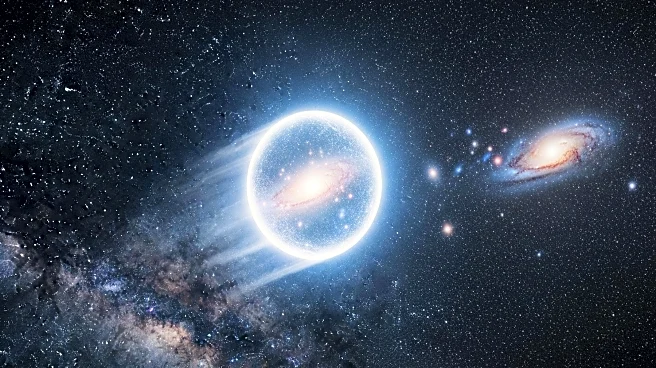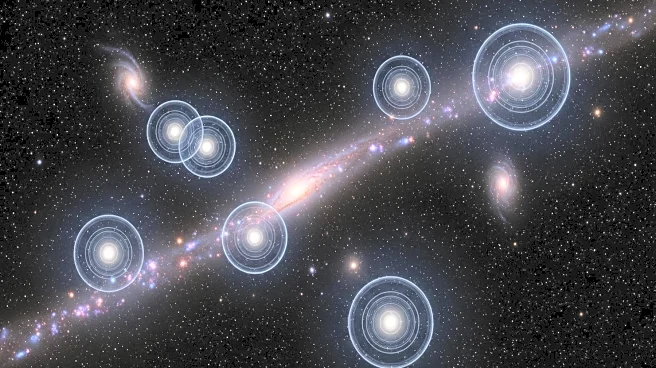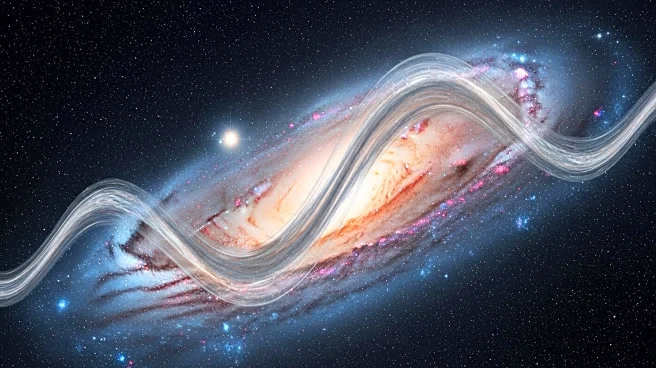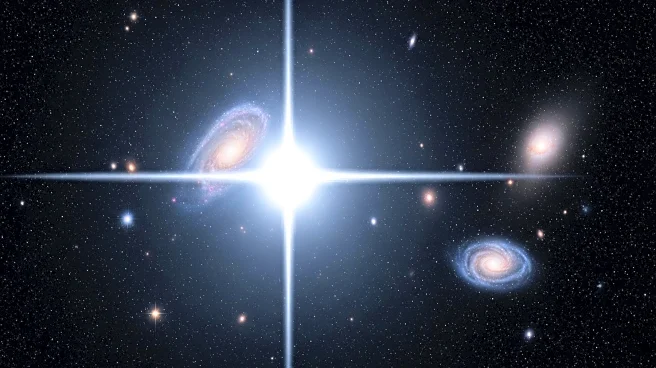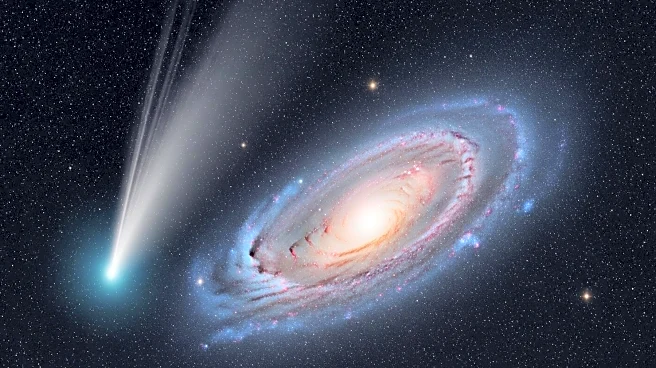What's Happening?
Astronomers have identified a new and powerful 'odd radio circle' (ORC) in deep space, named RAD J131346.9+500320. This ORC is notable for being the most distant and powerful one discovered to date, featuring two overlapping rings. ORCs are large, faint, glowing rings of radio waves that were first discovered in 2019. They are significantly larger than the Milky Way galaxy, and their origins remain a mystery. The discovery was made using the LOFAR radio telescope, which observes low-frequency radio waves. Citizen scientists from the RAD@home Astronomy Collaboratory played a crucial role in this discovery, highlighting the importance of collaborative efforts in scientific research.
Why It's Important?
The discovery of this powerful ORC provides valuable insights into the nature of these mysterious cosmic structures. ORCs may hold clues about the evolution of galaxies and black holes, as well as the interactions between them. Understanding ORCs could lead to breakthroughs in astrophysics, shedding light on the processes that shape the universe. The involvement of citizen scientists in this discovery underscores the potential for collaborative research efforts to advance scientific knowledge. As more ORCs are discovered, they may reveal patterns and phenomena that challenge existing theories about the cosmos.
What's Next?
Astronomers plan to continue studying ORCs using more advanced telescopes, such as the upcoming Square Kilometre Array. These efforts aim to uncover more ORCs and understand their formation and evolution. New sky surveys will also help determine the locations and changes of these rings over time. As research progresses, scientists hope to unravel the mysteries of ORCs and their role in the universe, potentially leading to new theories about galaxy and black hole interactions.

